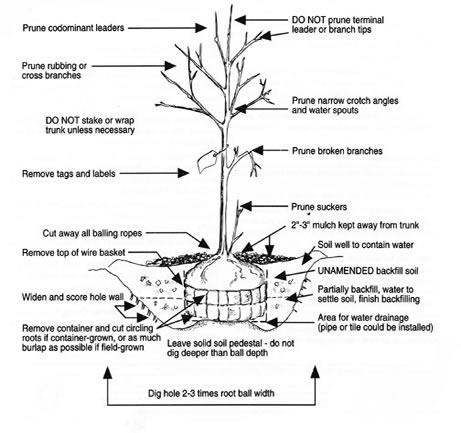Tree Planting
 A properly planted tree or shrub will result in a more vigorous and healthy plant. A plant that can tolerate more adverse conditions and require less management than one planted incorrectly.
A properly planted tree or shrub will result in a more vigorous and healthy plant. A plant that can tolerate more adverse conditions and require less management than one planted incorrectly.
The steps in planting should begin with knowing the yard or area you will be planting. Find out where the soils are deep and shallow and how they drain with or without irrigation. Then determine the amount of sunlight and shade during the day and through the growing season. Select a species that fits the parameters above and that will fit in this area (space) to accommodate both growth and character.
i.e.: Live Oaks are wider growing than taller. Red Oaks are taller growing than wider.
Be it ball and burlap or container grown, always observe the plants appearance. Is the foliage free of spots, lesions, and discoloration; is the branching desirable and characteristic? Next, observe root flares they should be exposed, and free of any soil build-up.
In our soils, soil amendments (peat moss, potting soil, etc.) should be avoided, the fewer soil interfaces the easier and faster roots become established. If soil types can be matched, the tree will benefit by becoming established much quicker.
At the time of putting the tree in the ground, the largest consideration should be to keep root flares exposed and above soil level, 2” – 3”, this will allow for breathing and settling. Cut away the top half of the basket, and remove nylon strings, avoid loose backfill and air pockets then water accordingly.
